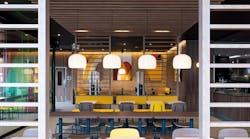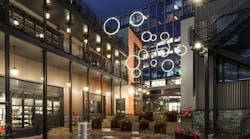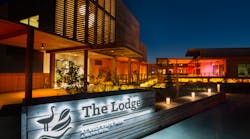Let's start with a look back. In October 1962, a General Electric Researcher named Doctor Nick Holonyak Junior invented what has been called the first LED, and the industry is celebrating the 50th birthday of what has become a ubiquitous semiconductor component. The team of GE researchers was mostly focused on infrared semiconductor lasers, but Holonyak had developed a gallium arsenide phosphate compound that could produce red light in the visible spectrum. Holonyak said that as soon as the red visible laser worked, he knew the technology would ultimately yield light from a semiconductor junction in other colors. What no one could have known was that 50 years later the LED would be poised to take over the lighting world.
Moving on to LED product life, long life was touted early on as a reason for swapping to LED-based light sources. Unfortunately, initial LED lighting products often failed early on because a solid-state lighting product is a complex system with driver electronics, and that system has many potential failure mechanisms.
But the industry is moving to deliver on the original promise. RAB Lighting, for example, just announced that all of its products carry a projected life of 100,000 hours, or 27 years in typical usage scenarios. That projection is based on the expected life of the LED based on the math standardized in the IES TM-21 specification, and on what RAB describes as a robust thermal design. Still, the RAB projection is just that and not a warranty. But we are seeing longer warranties as well. Cree Lighting, for example, has increased its warranty to 10 years for most all of its commercially-targeted solid-state lighting products.
We continue to see compelling case studies that validate the role of LED lighting in our future. One recent example comes from New York's Central Park and a DOE Gateway demonstration project. The project was focused on post-top luminaires that have a period look and that many municipalities want to deploy in downtowns and historic areas. The post-top application requires an omnidirectional beam and in some cases LED-based designs haven't delivered, but the DOE reports that all five LED products tested performed well, and that New York will now install LED fixtures from Spring City throughout the park.




